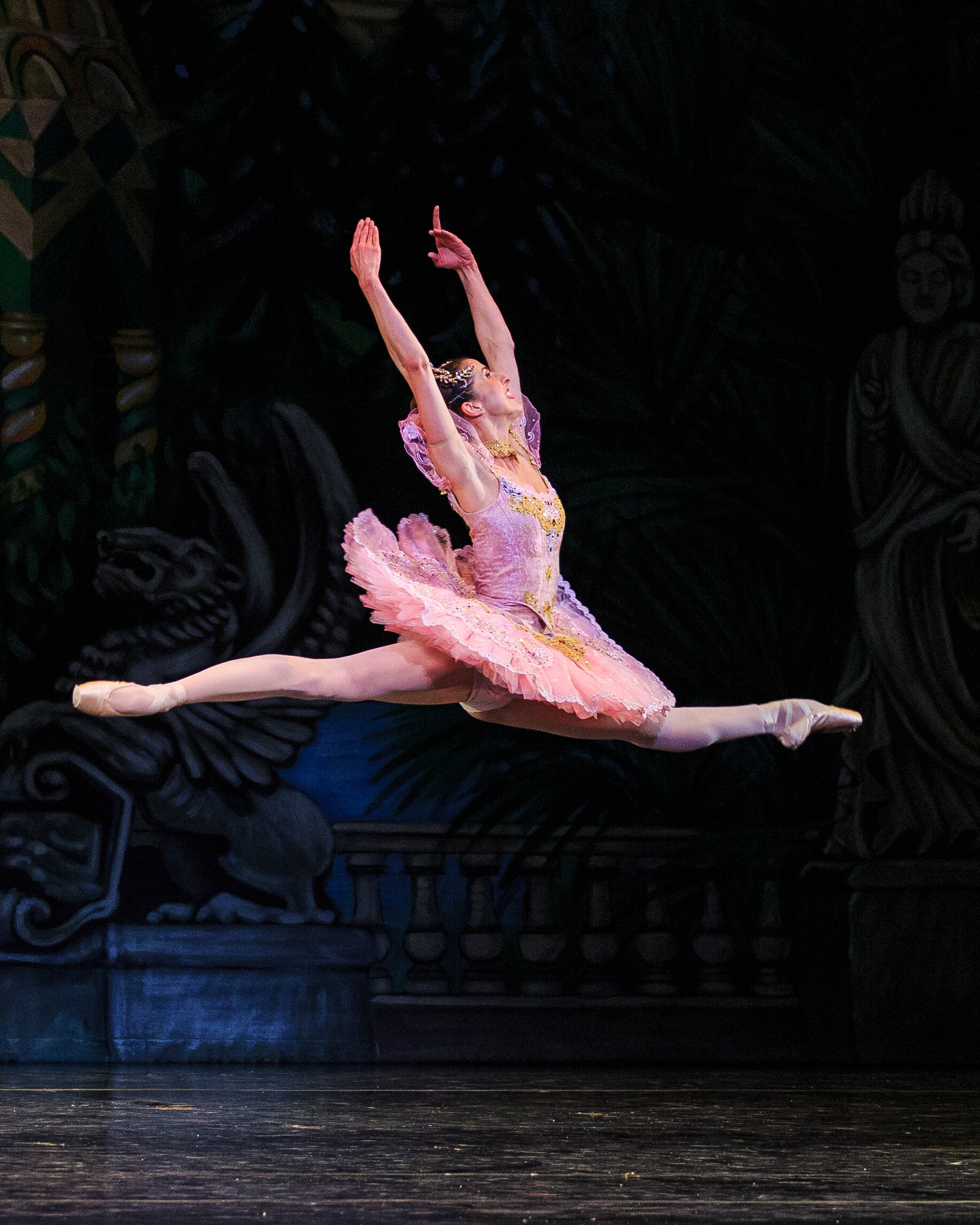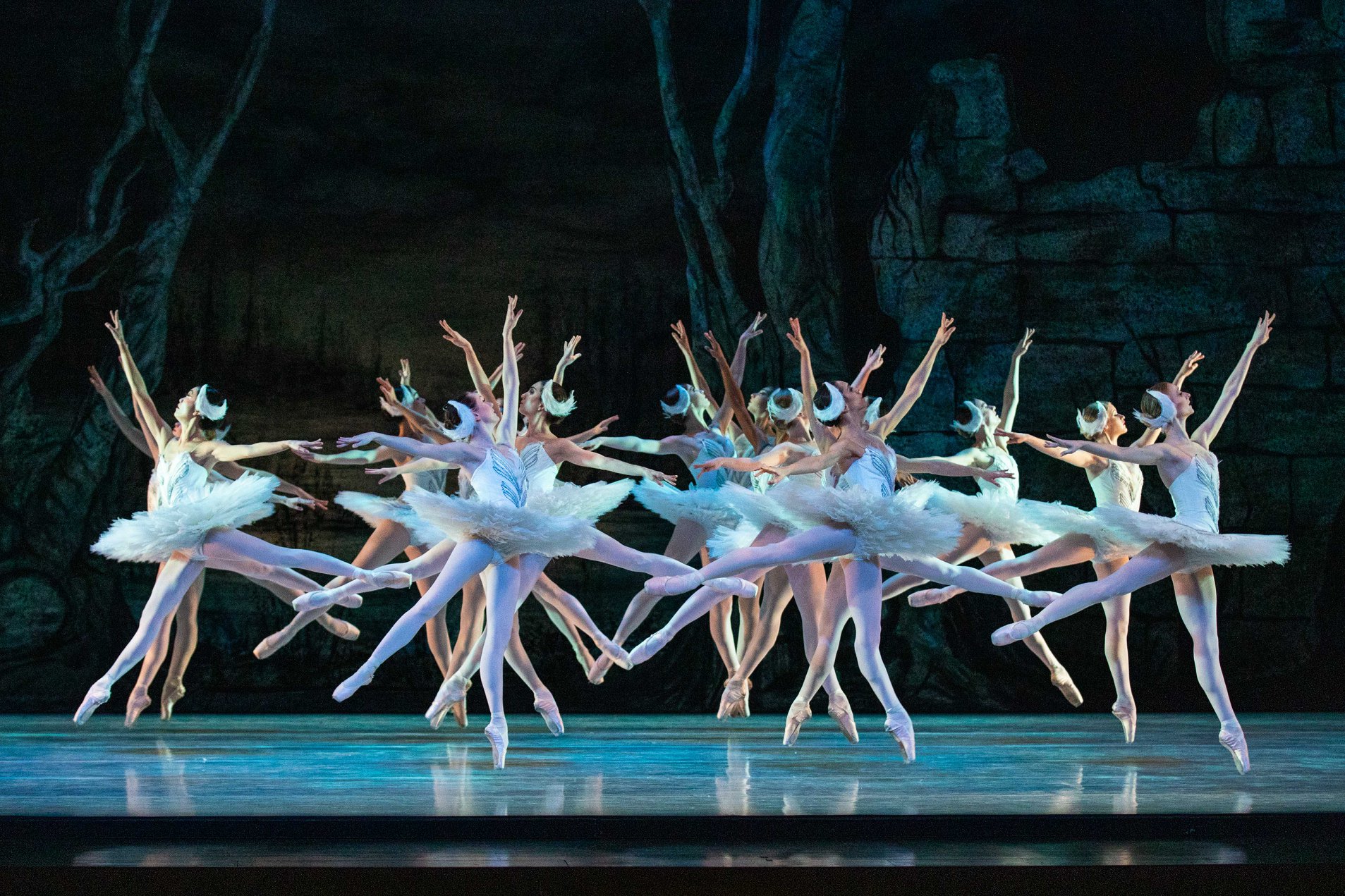It’s hard not to be impressed by Swan Lake. The heavy, dripping sprawl of its monumentally megalithic iconography is… eternally overwhelming. The music and choreography live outside of themselves in my brain, and maybe in yours too. Working its way from a dismally received premier through many revisions to its present form and engendering a vast cultural legacy and innumerable derivatives; Tchaikovsky’s most fêted handiwork has been performed for 142 years. I have learned it and performed it and seen it performed countless times, both live and in recordings from all over the world. And I have to say I’ve never seen one I truly enjoyed more than Ballet West’s current production.
The Capitol Theatre itself isn’t overly grand or spectacularly sprawling. But it’s cozy and charming (as prosceniums go), which makes it a wonderful locus for intimate, storybook detail and concentrated, emotional storytelling– a strength Ballet West has been cultivating with excellence in its story ballets of late. As in recent productions of Cinderella and Beauty and the Beast, they have again created a thoroughly illustrated, richly peopled world full of color and character and spirit, distilling something exquisitely different and special from a story I thought I knew very, very well.
Beyond nuanced updates to choreography, aesthetics, and staging, spectacular performances by the dancers made the ballet thrilling in a way that had me mentally calculating if I could return for a second viewing before I even vacated my seat. The company is full of skillful and smart actors; more and more, I seen in them the impulse towards a descriptive expansion of humanity and the slow razing and retrofitting of old prescriptive tropes. From the smallest page to the featured soloists, the production was awash in distinctive, fresh, and textured personality. Brought to life in vivid saturation by David Heuvel’s richly colorful costumes, they formulated a collective depth that kept the stage buzzing electrically the entire evening.
The parade of national dances in the third act, the princesses proffering themselves as candidates for Siegfried’s hand, was especially enlivening. Usually, that scene is when I find myself most empathetic toward our hapless Prince Siegfried in his exasperation with his matchmaking mother, the Queen (“Come on, another one? Really? Give it up mom.”). This time it hit me completely differently, like I was eight years old again and watching Act II of The Nutcracker for the first time, each of its series of divertissements wildly new and colorful and exciting. Here, each princess had a unique personality and all were terrifically funny in their various reactions to princely rejection. Throughout the Czardas, the repetition of grave, delicate gestures, the dance’s whirlwind finish, and the shivery intensity of Lillian Casscells, Dominic Ballard, and their ensemble had me on the edge of my seat. They smoldered and I found myself taking back every curse I’ve hurled under my breath at that particular folk dance in the past.
Even better was the Neapolitan. Jenna Rae Herrera is an incredibly warm, bright spot of sun in the company. I love watching her dance in every production, her joy always palpable and generous. It fills you and lifts you straight up. Here, both dressed in yellow and each with a tambourine in hand, she and partner Alexander McFarlan stole the show during their variation. The choreography for Ballet West’s version of the Neapolitan was fantastic and everyone around me was elated, cheering and laughing aloud as the pair’s antics took them spinning and dashing wildly around the stage.
Throughout the two acts that take place in the royal court, it was plain to see the great care taken in subtly re-imagining and reinvigorating the classic choreography to keep momentum moving, every successive dance exciting and unique. The buoyant whirl of courtiers in beautiful, airy blue costumes flooded the stage in Act I before pulling back to reveal a delicately piquant pas de trois. The wide, laughing grin on Tyler Gum’s face was a sharp point of touching sweetness as he partnered Sayaka Ohtaki and Katlyn Addison. The large, intricately pinwheeling dance of the young courtiers and Ballet West Academy students, led by Mia Tureson, was funny, cute, and marvelously well-executed. As others have noted in earlier reviews from this season, the young Academy students are impressively capable performers and always exceptionally well-rehearsed. Tureson in particular was absolutely sparkling.
And then there were, of course, the swans. Rising out of just the right amount of billowing fog, their synchronicity and intensity made hearts soar (and my eyes sting). Sharp head movements and powerful sweeping wings gave this flock a little more strength and animal quality than others I’ve seen in the past. In the dance of the Cygnets, I loved the sharp focus of heads cast to each corner of the proscenium, rather than the often-opted-for slow roll down and around.
Also exciting was seeing the degree of variation in the corps de ballet. The dancers both looked and moved differently. Each was distinct unto themselves, and the double-down on a commitment to diversity that Ballet West has begun to enact over the last few years is starting to manifest in an appreciable way on stage. They were perfectly, ferociously, and crystalline-clearly in sync, as I remembered all the times in my youth that I heard that a perfectly identical body of bodies was the only way to achieve eternal and ethereal beauty. The satisfaction and elation of seeing a corps de ballet of swans like this one was piercing. I sincerely hope Ballet West continues to push in that direction.
Chase O’Connell portrayed Siegfried with signature elegance. Lofting about in technical excellence, his natural connection with Beckanne Sisk made for some beautiful moments in the two white swan pas de deux. I will say, though, that he appeared more at home in the moments when things were going well for his character. Harried despair didn’t hang quite as naturally on him, his moments of circling the stage in anguish maybe a little dry.
Sisk fulfilled the expectations that always precede her and then some. Fiercely technical with buckets of personality, I fully admit I expected her to hit the height of her shine as the black swan rather than the white. Both were excellent, but in fact it was almost the opposite. Forgoing some of the frailty of other swan queens, she had powerful wings like her corps, which served her better in highlighting the strength of her choice to trust the hunter and the eventual tenderness of that connection. She hit all the most iconic moments of Acts II and IV with a force that sent the room spinning, a rushing wave of divine recognition as her image lined up with the primary referent that lives at the back of my brain.
Her black swan was all sass all the time. Not even bothering to construct a facsimile of Odette and quiver her wings, she took over poor Siegfried with sheer force. I might typically expect a more paced build-up of devilishness to those fourth-wall breaks and that moment all the trickery is revealed, but honestly I’ve always found it hard to buy that the hapless prince really didn’t know the shiny new girl at his party wasn’t his true love from the forest. Whether it was a conscious artistic choice or not, I preferred interpreting that his character really does just fail miserably for a moment. It makes the betrayal even more wrenching and turns the final resolution into something much sweeter and more powerful, with layers of emotional verisimilitude that are more relatable. At any rate, Sisk’s wicked and hungry eyes are just so winning that it was incredibly fun to watch.
In the end, of course, Odette forgives her wayward lover and he continues to whirl her around tragically even as she starts to weaken and fall apart. In one especially striking moment during that final pas de deux, Sisk penché-d to the full extent of her powers towards a kneeling O’Connell before crumbling with almost ugly ferocity into a deep lunge. That simple horrifying fall into gravity carried all the weight of the couple’s despair as the evil Baron von Rothbart herded them towards death. Finally, the swan maidens returned to human form, their curse broken with the new light of day, bringing the story to a satisfying close.



